Contents:
1. Introduction to Biosensors
2. Categories of Biosensors
3. Purposes of Biosensors
4. Applications of Biosensor
5. Advantages of Biosensors
1. Introduction to Biosensors:
Biosensor is an analytical device consisting of a biocatalyst (enzyme, cell or tissue) and a transducer which can convert a biological or biochemical signal or response into quantifiable electrical signal (Fig. 13.1).

The biocatalyst component of most of biosensors is immobilized into a membrane or within a gel such that the biocatalyst is held in intimate contact with the transducers and may be reused. The biological recognition system in biosensors is microbial cell or an enzyme, antibody, hormone, nucleic acid that are immobilized in microchip devices for quantitative estimation of a substance. The principle of simple glucose sensor using glucose oxidase is illustrated in Fig. 13.2.


The biosensor does not directly detect the target analyte (glucose) instead measures the change in the concentration of a co-reactant (oxygen) or a co- product (hydrogen peroxide) of the reaction catalyzed by immobilized biological sensing material (GOD).
GOD is combined with an oxygen electrode as a transducer-
(a) The base line current of sensor
(b) Oxygen concentration is lower than I a and electric current decreases
(c) As glucose concentration increases sensor response will also increase
2. Categories of Biosensors:
Biosensors can be categorized based on degree of intimacy between biocatalyst and transducers into:
1. First Generation Instruments:
The two components (biocatalyst and transducer) may be easily separated and both may remain functional in the absence of the other.
2. Second Generation Instruments:
The two components interact in a more intimate fashion and removal of one of the components affects the usual functioning of the other.
Biosensor configurations are categorized into two types. Batch type (Fig. 13.2a) and flow type (Fig. 13.2b). In flow type sensors a column is shifted with biomaterial – immobilized leads can be incorporated separately from a transducer. These are very useful for continuous monitoring of target analytes. Typical immobilization carners are glass, alginate, membranes and resin beads.
Flow Injection Analysis (FIA) is a technique sometimes used in flow type biosensors. Biosensors using FIA yield very rapid and accurate measurements and very useful in different fields like environmental monitoring and food quality control. Disposable biosensors such as amperometic glucose sensors for medical diagnosis are example of a batch-type sensor.
3. Third Generation Instruments:
The biochemistry and electro-chemistry are even more closely linked and where the electrochemistry occurs at a semi-conductor, the term biochip, may be applied to describe such instruments.
The biosensor may be of different kinds like electrochemical, amperometric, thermistor bioaffinity, whole cells (microbial), optoelectronic etc. The sensor which may be carbon electrode, an ion-sensitive electrode, oxygen electrode, photocell or thermistor, analyses the biological signals and converts them into electrical signals in the readable from which is recorded on a meter.
The substance to be analysed passes through the membrane and interacts with immobilized material to yield the biological signals (electrons, heat, ions, gases etc.). These biological signals are then converted into electrical signals by the sensors.
The natural biosensors are the sense organs primarily the chemical sensors of smell and taste. Technical biosensors have been under intense development since the middle of 1960 with the prospects of commercial potential offered by biotechnology. These are the combination of biologically active material displaying characteristics especially with chemical or electronic sensor to convert the response into electrical signals. Some of the common biosensors, used extensively are listed in table 13.1.

Biosensors are, in fact biocatalysts. They are used as an immobilized biological molecule (usually an enzyme or antibody) or a whole microbial cell to detect or sense a particular substance. The biosensor does this by reacting specifically with the substance to be detected so as to give a product which is used to generate an electrical signal by means of a device called transducer.
The response of biosensor is measured in terms of substrate used or product formed. They are of different types like carbon electrode, glucose electrode ion sensitive electrode, photocell, oxygen electrode, adenosine electrode. For example a glucose electrode is constructed by immobilizing a layer of glucose in polyacrylamide gel around a platinum oxygen electrode.
When a solution of glucose is brought into contact with electrode, glucose and oxygen diffuses into an enzyme layer and are converted into gluconolactone and hydrogen peroxide lowering oxygen concentration around the electrode. Oxygen concentration read by electrode is proportional to glucose concentration in the sample (Fig. 13.3).

Biosensor technology couples our knowledge of biology with advances in microelectronics. A biosensor is composed of a biological component such as a cell or antibody linked to a tiny transducer. Biosensors are detecting devices that rely on the specificity of cells and molecules to identify and measure substances at extremely low concentrations. When the substance of interest collides with biological components, the transducer produces a digital electronic signal proportional to the concentration of the substance.
3. Purposes of Biosensors:
Biosensors are used for following purposes:
1. Measure the nutritional value fresheners, flavor and safety of food.
2. Measure vital blood components.
3. Locate and measure environmental pollutants.
4. Detect glucose, acetic acid, glutamic acid, ethanol and biochemical oxygen demand (BOD) in a sample.
5. Measurement of cephalosporins, nicotinic acid and several B-Vitamins.
6. Measuring food quality based on aflatoxin contamination. An automated unit based on a new column based immunoaffinity recharged at 0.1 to 50 ppb aflatoxins in 1.0 ml sample in less than 2 minutes.
It is sometimes useful in monitoring the specific chemical both accurately and rapidly.
In Medical field such as detection of hepatitis antigens in blood during infection by virus can be detected. Abnormal amount of urea in blood or urine in kidney, such diseases can be measured. Hormone, gonadotropin produced during pregnancy can be tested and measured. High concentrations of creatine produced after heart attack can be analysed.
Biosensors are used to know about the nature of industrial products of acids, alcohols, phenols, pollutants etc. The industrial workers can know the presence and concentration of hazardous chemicals in the environment surrounding them. Biosensors can detect various chemical warfare agents, nerve gas etc.
In environmental analysis such as measurement of BOD, ammonia, nitrate, sulfite. The BOD sensor, which uses an omnivorous yeast, Trichosporon cutaneum is a well-known example of a microbial biosensor applied to environmental monitoring. The microbial BOD sensor measures the oxygen uptake by the respiratory system of the microorganism which changes as a result of the biodegradation of organic compounds in the sample.
An intensive research is going in Central Electro-Chemical Research Institute (CECRI) Karaikudi, Tata Institute, Fundamental Research and Technology (TIFRT) New Delhi, Council of Scientific and Industrial Research (CSIR) Chandigarh and Central Electrical Engineering Research Institute (CEERI), Pilani.
Military researches have been taking more interest as a means of detecting nerve gases and other chemical warfare toxins.
In recent times microorganisms are being used as molecular recognization elements in biosensors. The principle of a microbial sensor is based either on the change of respiration or the amount of produced metabolites as the result of assimilation of substrates by microorganisms. Further, more use of auxotrophic mutants can selectively determine many kinds of substances. For example – vitamin B12 sensor was constructed by using immobilized E.coli 215 which is auxotroylic to B12.
The linear relationship was obtained in the range between 5 x 109 and 25 x 109 g/ml within 25 days. The decrease in the response was only 8% approximately. Recently thermophilic bacteria which minimize contamination and stable for long-term are being exploited for this purpose. Some of the biosensors based on microorganisms are listed in table 13.2.

4. Applications of Biosensor:
Biosensor technology can be used:
1. To determine quality of fresh food such as meat and fish.
2. In online measurement of alcohol concentration in culture broth as required in brewing and fermentation industries.
3. It is possible to detect toxins based on bioluminescence. Certain bacteria can be genetically engineered to grow in dark. These bacteria are used as living biosensor for detecting a variety of toxic agents.
4. Biosensor containing immobilized, Trichosporon cutaneum, is used to test the extent of water contamination by measuring the B.O.D.
Biosensors have replaced conventional methods, which are often complicated, time consuming expensive and require pretreatment or clean-up of real samples prior to analysis.
Biosensors can also be used in the following fields:
1. Clinical diagnosis and biomedical monitoring.
2. Agricultural, horticultural and veterinary analysis.
3. Detection of pollution and microbial contamination of water
4. Fermentation analysis and control.
5. Monitoring of industrial gases and liquids.
6. Measurement of toxic gas in mining industries.
7. Direct biological measurement of flavors, essences and hormones.
5. Advantages of Biosensors:
Microbial biosensors have many advantages such as:
1. Implantation in human body and are suitable to in vivo measurement.
2. Can be integrated on one chip and are useful for measuring various substances in small amounts of sample solution simultaneously.
3. Since semiconductor fabrication technology is applied to micro-biosensors, it is possible to develop disposable transducers for biosensors through mass production.
Biosensors have following advantages over other analytical methods:
1. Rapid and convenient detection
2. Direct measurement of real sample
3. Very specific detection
However, these biosensors are instable and lack reproducibility, a major concern. Rapid advances are being made in all areas of biosensor technology. These include major improvements in the stability and durability of these units, which are being made more portable and sensitive. Microorganisms and metabolites such as glucose can be measured, thus meeting critical needs in modern medicine.

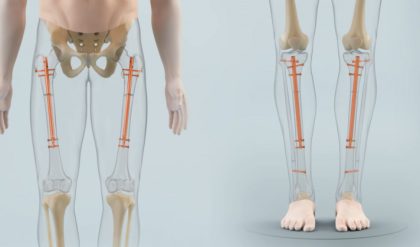
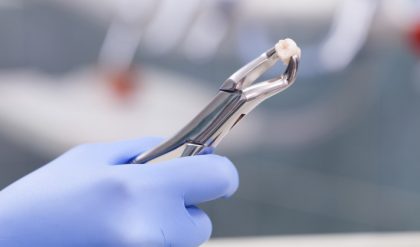
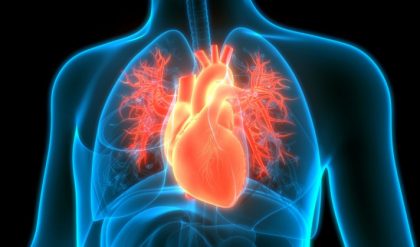
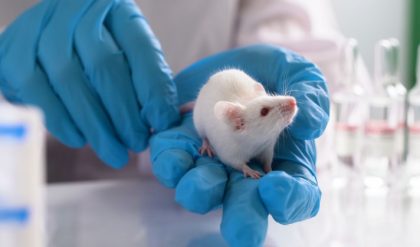
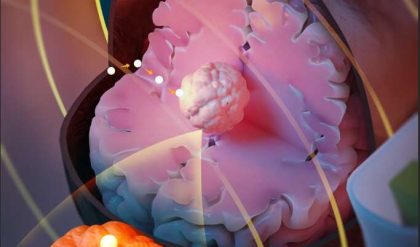
Comments are closed.